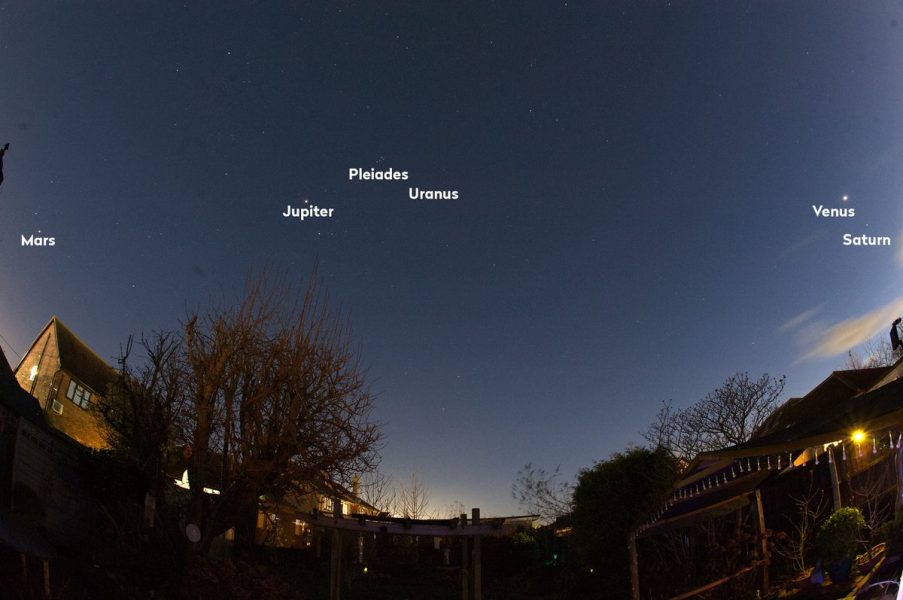Supersonic winds blow at 33,000 km/h in space around the planet WASP-127b – Indian Defence Review

WASP-127b boasts wind speeds of 33,000 km/h—faster than anything we’ve seen before! This gas giant’s bizarre atmosphere invites questions that could reshape our understanding of distant planets. Discover the secrets of this extraordinary world!Out in the vastness of space, exoplanets are keeping scientists on their toes with all sorts of wild and extreme traits. One such intriguing world is WASP-127b. It’s not just its massive size that grabs attention—it’s also got some seriously unusual atmospheric stuff going on. Sitting a whopping 520 light-years away from us, this gas giant circles a star that’s quite like our Sun. Its standout features have astronomers around the globe buzzing, offering a peek into the mysterious makeup of far-off planets.WASP-127b is what you’d call a gas giant, kind of like our own Jupiter but with a twist. It’s actually about 30% bigger in diameter than Jupiter but only has around 16% of its mass. This makes it one of the puffiest, least dense planets we’ve ever found. That low density hints at an atmosphere that’s super stretched out and not as tightly packed as other known planets.Being labeled a “hot Jupiter” adds even more intrigue to its profile. With temperatures hitting over 1,000 kelvins (730°C) and maxing out around 1,400 kelvins (1,127°C) in its atmosphere, WASP-127b is roasting due to how close it snuggles up to its star. This extreme heat plays a big part in shaping the planet’s oddball traits and behavior.The most jaw-dropping thing about WASP-127b? Its crazy-fast winds. Scientists have clocked jet streams whipping around its equator at an insane speed of 33,000 km/h. Just for comparison, Earth’s jet streams up high can reach speeds up to 442 km/h, making WASP-127b’s winds among the fastest we’ve ever seen on any planet.These fierce winds get their kick mostly from the intense radiation coming off the host star that shines nonstop on one side—the “day side” they call it. This radiation energy drives these wild atmospheric currents, though researchers think there might be more factors stirring things up.The groundbreaking study on WASP-127b made waves when published in the journal Astronomy & Astrophysics, led by astrophysicist Lisa Nortmann along with co-author David Cont. They used CRIRES+, a cutting-edge tool hooked up to the Very Large Telescope at the European Southern Observatory in Chile for their observations.Nortmann was pretty blown away by finding such “astonishingly high” wind speeds and pointed out how these discoveries throw current models of exoplanet atmospheres into question. David Cont highlighted how tricky it is figuring out what exactly powers these intense winds since many factors play into shaping wind patterns on exoplanets.Figuring out what really drives these supersonic winds on WASP-127b is still top-of-mind for researchers. As they dig deeper into what influences wind models in alien atmospheres, they’re looking forward to new findings that could shed light on distant worlds’ weather systems too. The complex dance happening on WASP-127b might hold essential clues about atmospheric conditions elsewhere in space.As we keep exploring planets beyond our solar system, each discovery opens fresh paths for learning and understanding more about them. The mystifying nature of WASP-127b reminds us there’s still so much unknown about our universe and pushes us toward more investigation into these captivating celestial wonders. For anyone fascinated by space exploration and science breakthroughs, diving into such phenomena invites us all to ponder what’s out there—and what cosmic secrets are waiting to be uncovered among the stars surrounding us.Got a reaction? Share your thoughts in the commentsEnjoyed this article? Subscribe to our free Newsletter for engaging stories, exclusive content, and the latest newsComment Save my name, email, and website in this browser for the next time I comment.
© 2024 | Indian Defence Review | All rights reserved






